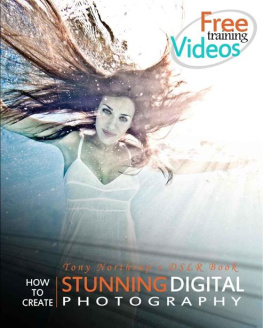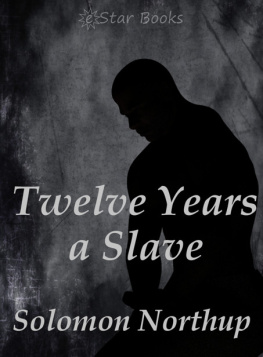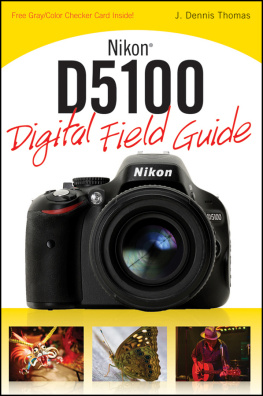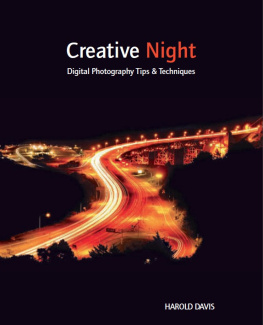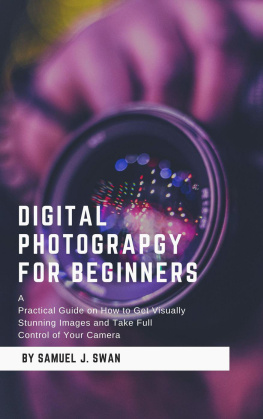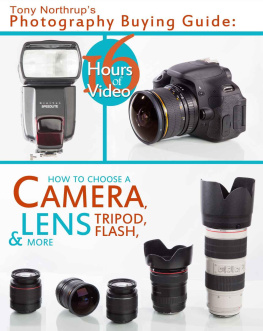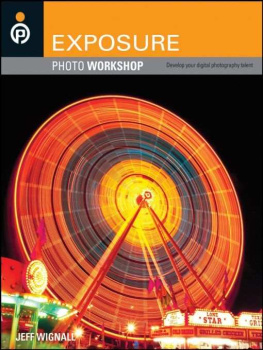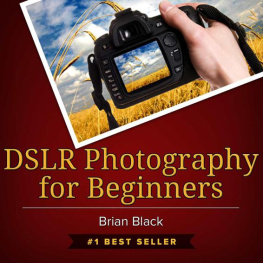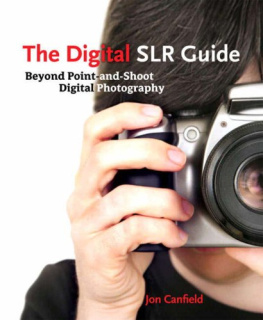Table of Contents
Introduction
Welcome eBook readers! Find out about new videos and updates by liking our .
For more of my pictures, see my portfolio at .
Video: Why This Book is Different
(Mobile or Desktop)
Click to play video: Why this Book is Different (1:14)

Please note that you can zoom in on all the pictures in this book to see each pictures details and more easily read the captions. Unlike most books, this book will continue to improve over time as I fix errors and add new sections. Amazon will notify you by e-mail when a new update is available; you will need to reply that you want to receive the update.
With this book, Im going to teach you how to take stunning photos. Spend ten minutes reading the tips in this first chapter, and your pictures will be much better. If you read the entire book and work through the practices, youll be on your way to becoming a great, or even professional, photographer. Years from now, when you and your family look back on your pictures, youll know the extra time was worth the effort.
For those of you who are already advanced photographers, theres still a TON you can learn from this book. Ive described every practical technique that Ive found useful during my years as a professional photographer. Start at , and skim past the content you already feel comfortable with.
This book is unique in many ways:
- Its truly all-in-one . This is one book for general, portrait (including natural light, flash, and studio), wildlife, landscape, night, macro, wedding, and even underwater photography.
- It contains over 3 hours of video training . If your e-reader can play video (such as the Kindle Fire, Nook HD, iPhone, iPad, or an Android device), clicking the links when you have an Internet connection will load the video directly within your e-reader. If you use a black-and-white e-reader (such as the black-and-white Kindles or the Nook Simple Touch), type the URLs into a computer, or scan the QR code with a free smartphone or tablet app.
- Its for both the beginner and advanced amateur . For the beginner, this book teaches the basics of how to compose and light photos. Advanced amateurs can jump directly to the in-depth discussions.
- Its up-to-date (as of February 2013) . This book covers the latest trends and equipment, including HDR photography and modern post-processing.
- It provides classroom-style support . Join the private to get feedback on your photos and have your questions answered by Tony, Chelsea, and other readers.
- It provides specific, current hardware and software recommendations . I provide unbiased recommendations for camera accessories for every budget.
- It provides hands-on lessons . Each chapter includes a list of practices and fun projects to get you hands-on experience.
- It teaches art before technology . This book leads with artistic fundamentals and then digs into the technical details you need to know to achieve your creative vision.
- It uses no stock photography . My partner Chelsea and I traveled to 15 countries over the course of three years to take every one of the more than 350 pictures in this book, so you know I can teach you how to take them.
I suggest everyone read Chapters 1-5, which cover the fundamentals of composition, lighting, and controlling your camera. From there, feel free to skip to the chapters covering the types of photography youre most passionate about. This books chapters are:
- . I put all the best tips right at the front of the book. It took me years to learn these lessons; itll take you about 20 minutes.
- . Composition is more art than science, and the concepts apply no matter what type of camera youre using or what type of photography youre into.
- . This chapter teaches the importance of lighting. Ill show you how to best use natural light, and how to add light using a flashwithout ruining the picture.
- This chapter digs into the technical side of photography. Ill teach you how to use aperture to keep everything in focus or blur the background so your subject stands out. Youll also learn how to prevent shaky, noisy, tinted, and dark pictures.
- . Flip to this chapter any time your pictures dont turn out for some quick troubleshooting. Ill show you how to fix all the common photographic problems, including blurry, dark, bright, noisy, crooked, and washed-out pictures. Ill even show you how to fix boring photos.
- . Learn to take great pictures of people. Youll get people comfortable in front of the camera, find the best light, and pose them in a flattering way. This chapter covers everything from snapshots to formal portraits, including natural light, flash, and full studio lighting.
- . While one chapter cant replace the years of experience it takes to be a great wedding photographer, this chapter will get you through your first as-a-favor-to-a-friend wedding.
- . Wildlife photography has always been my favorite. This chapter teaches you how to get great photos of both pets and wild animals, in captivity and in the wild. I go into detail about the behavior of different species so you can get in close without disturbing them.
- The Earth is a beautiful place, but capturing that beauty requires planning, patience, and persistence. Earlier chapters taught you most of what you need to know about setting up your camera and composing the shot, so this chapter focuses on finding the best locations, getting the timing right, and planning around the weather.
- If youre hearty, patient, and adventurous, you can capture the world around you as few people see it. This chapter shows you how to overcome the many technical challenges of low light photography, and how to use light painting to add your own light.
- . High Dynamic Range photography has been popular due to the dramatic and artistic looks made possible by tone-mapping. HDR is also very practical for photographers working in contrasty environments and photographers who need to minimize the noise in shadow areas.
- Macro photography, also known as close-up photography, shows the detail in tiny subjects. This chapter covers a variety of inexpensive and high-end hardware and the techniques you must understand to use them properly.
- Theres a vast world filled with colorful life under the surface of the water, but water presents some of the greatest challenges to photographers. This chapter teaches you to overcome those challenges and capture stunning underwater photos (while keeping your equipment safe).
At the end of the book, youll find a that includes useful explanations for all the potentially confusing photographic terms youll encounter.
First, Id like to thank the readers that have sent me feedback, allowing me to improve the book even after the first release. Thank you, Erkki Alvenmod, Jeff Bissonnette, Evan Bobbit, Yannick Ciancanelli, Brendon Code, Nick Dahlke, Fedor Duhrmann, Britton Graefensteiner, Yannick Ciancanelli, Tamera Hamblin Shibuya, Craig Pettigrew, John-Paul Cosentino, Greg Prince, Luis Hurtado, Lucky Fonseka, Jake Taylor, John Monju, Tom Jones, Debbie Robinson, and Mark Houston!
Ive spent three years writing this book, and in that time, I learned to rely on many of my family and friends. I have to thank my models: Tyler Rheaume; Girard (both of them!) and Margaux Antonino; Mark, Summer, Lily, and J.P. Antonino; Megan McSweeny; Justin and Jessica Eckert; Frankie Occhionero; and Madelyn Knowles.
Id also like to thank my reviewers: Kevin Girard, Jose B. Gonzales, and Kurt Dillard. I know you each put a lot of energy into this book, and not only do I owe you thanks, but every one of my readers does, too.
Next page
